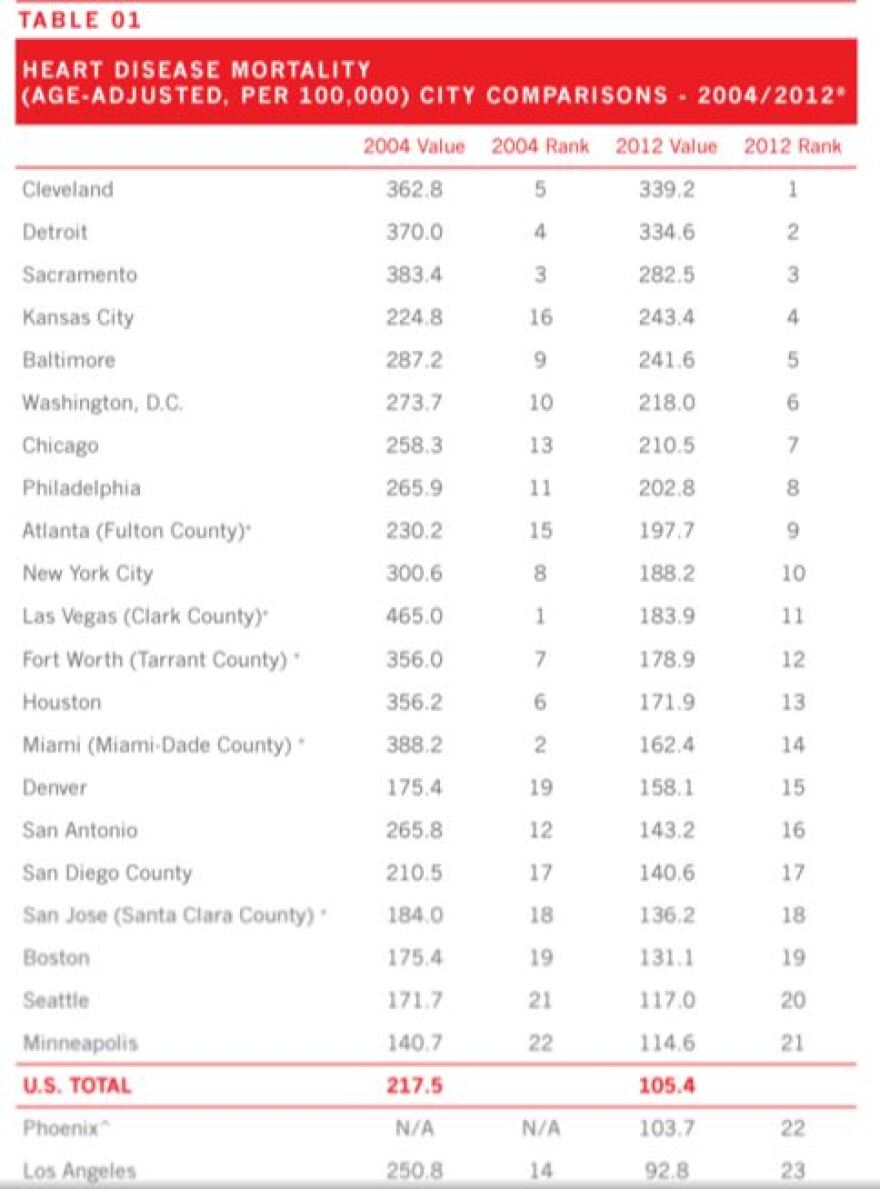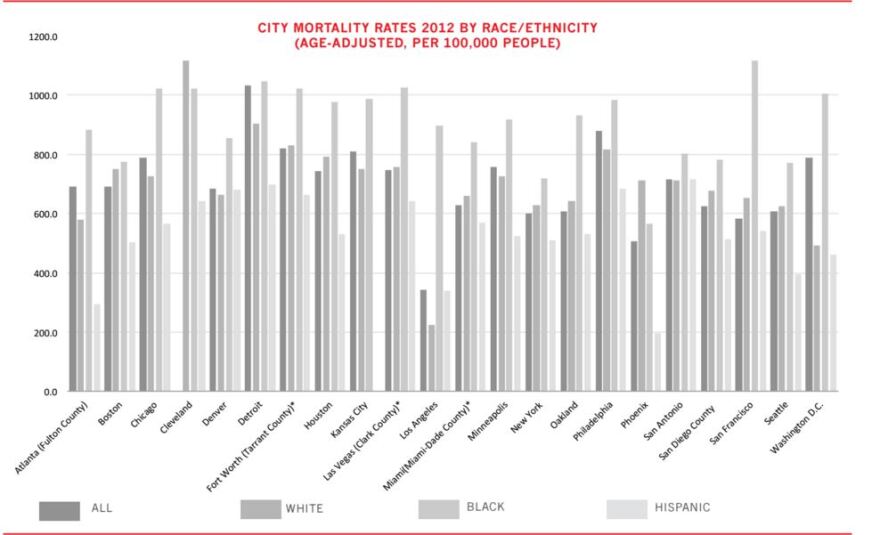Last month the Robert Wood Johnson Foundation recognized Kansas City for its efforts to improve public health with its Culture of Health prize.
Now a newly released report by the Big Cities Health Coalition comparing health outcomes in the country’s 26 biggest cities offers a boatload of data suggesting Kansas City has made strides in many areas but lags in others.
To wit: Kansas City meets the goals set by the U.S. Department of Health and Human Services’ “Healthy People 2020” program for diabetes deaths but does not for cancer or heart disease deaths.
- Kansas City’s rate of diabetes deaths in 2012 was 21.6 per 100,000 population, which is less than a third of the national average of 69.1 per 100,000.
- But Kansas City’s cancer mortality, while declining 12 percent from 2004 to 2012 to 187 per 100,000, still fell short of the 2020 goal of 161.4 per 100,000.
- Likewise, Kansas City’s heart disease mortality rate of 167 per 100,000 fell well short of the 2020 goal of 129.2 per 100,000.
Kansas City’s 2012 heart mortality rates were the fourth worst of the 26 cities. Cleveland was worst, followed by Detroit and Sacramento. Los Angeles was best, followed by Phoenix, Minneapolis and Seattle.

“We knew that our cardiovascular deaths from heart attacks had been fairly stable for a period of time, but it was a surprise to see most places have gone down where we’ve been stable,” Dr. Rex Archer, director of the Kansas City Health Department, said about the data.
Kansas City, however, was no different from the majority of the 26 cities when it came to meeting the 2020 cancer and heart disease mortality goals. Only 12 cities met them.
Archer attributed Kansas City’s poor heart disease showing in large part to the high rates of cigarette smoking here. And he attributed that, in turn, to Missouri's lowest-in-the-nation cigarette tax.
“It’s a huge challenge and we’re unfortunately preempted from fixing that because of the state,” he said.
One good sign, he said, was the Tobacco 21/KC initiative that would make 21 the legal age for purchasing tobacco products. A city council committee on Wednesday unanimously approved such an ordinance for consideration by the full council later this week.
“It’s not surprising that we’ve got an epidemic of smoking and we’re dealing with that,” Archer said. “And that’s one of the major causes of cardiovascular disease and death.”
The Big Cities report, based on data provided by local health departments, updates 2007 data and finds that cities overall are showing improved health outcomes. For other Kansas City data, click here.
Kansas City was singled out for its efforts to stem violence, particularly its Aim4Peace Violence Prevention program. Between 2010 and 2014, the report notes, homicides in the city fell 70 percent.
“Rather than believing violence is inevitable, Kansas City officials today see violence as an unacceptable learned behavior resulting from preventable and controllable factors, including family instability, poverty, domestic abuse, educational failure and substance abuse,” the report says.
When it comes to how the health of city dwellers compares with that of other Americans, the report says they were less healthy by almost every measure in 2007. Now they have far lower diabetes mortality rates and similar cancer mortality rates. But they “still struggle greatly to control rates of heart disease mortality, when compared with the United States as a whole,” the report states.

One surprising finding from the overall data: While longstanding health disparities between black and white Americans persist, the health of Hispanics outpaces that of the general population.
“We didn’t do a ton of analysis on this, but at first blush when we saw that, we were a little bit surprised and then realized that this is a trend that others are seeing,” Chrissie Juliano, director of the Big Cities Health Coalition, said in a conference call with reporters.
But as the report notes, while blacks generally still have higher mortality rates than whites for cancer, heart disease, diabetes and HIV/AIDS, “the picture is more complicated for Hispanics, depending on the condition.”

Dan Margolies, editor of the Heartland Health Monitor team, is based at KCUR. You can reach him on Twitter @DanMargolies.





